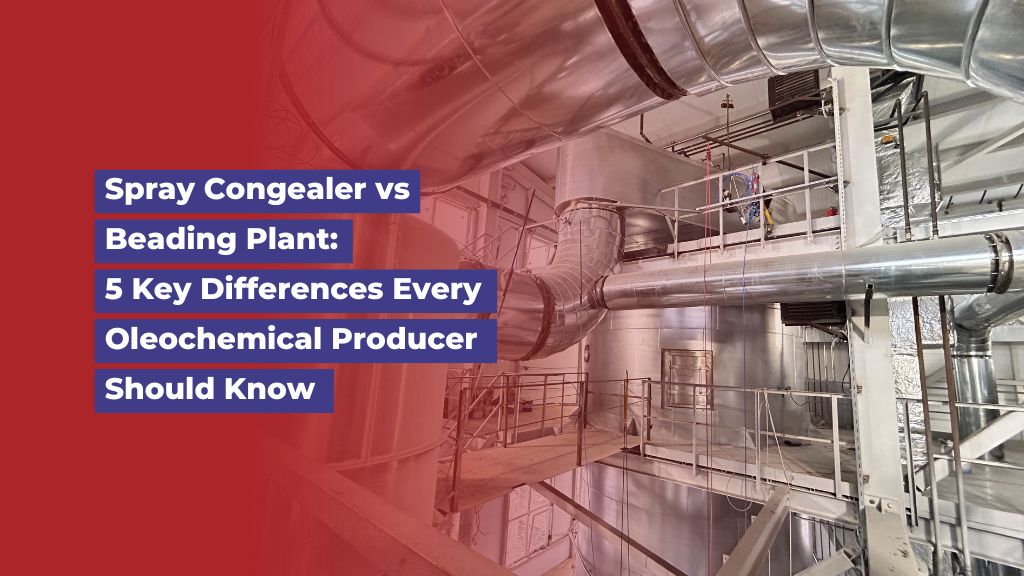When it comes to solidifying molten fatty acids, glycerides, or waxes, two technologies dominate the discussion: the vertical Spray Cooler (also known as a spray-cooling Plant) and the horizontal Beading Plant. At first glance, both systems convert molten mass into solid particles but beneath the surface, they are engineered for very different operating needs.
Here are five critical differences that every oleochemical producer should consider:
1. Particle Size & Shape
A spray cooler atomizes molten mass through pressure nozzles into a cold air stream. The droplets solidify almost instantly, forming fine, powder-like particles typically between 100 and 1000 µm. Beading plants, particularly those engineered by Shachi, allow low-pressure droplets to fall from a precisely controlled height and velocity, enabling bead formation during the fall itself. This results in uniform, free-flowing with range tailored to customer requirements. (for ex: 750 µm +/- 150 µm). While powders pack densely, beads retain excellent flow properties even in humid environments.
2. Iodine-Value Flexibility
Low iodine value (IV <2) oleochemicals are relatively easy to cool. High IV materials (>10), however, are more difficult to solidify due to their tendency to remain sticky. Spray coolers are well-suited for low-IV products, where single-stage air cooling is sufficient to stabilize structure. In contrast, beading plants utilize multi-stage cooling and optimized residence time, enabling them to efficiently handle a wide range of IV values from 1 to 20 broadening the scope of products that can be processed.
3. Cooling Stages
Spray coolers operate on a single-stage cooling system, offering limited control over process parameters. Beading plants, on the other hand, feature two to three stages of cooling, giving operators full control over variables such as air inlet and outlet temperatures, melt temperature, airflow rates, and more. This level of precision ensures better process stability and product consistency.
4. Removal of Heat of Crystallization
Spray coolers release crystallization heat rapidly in one air-cooling pass, producing fine powder that may require post-conditioning (e.g., silo ageing or open bag packing which lead to the delay in packing operation) to maintain flowability. Beading plants employ a sequential cooling process, often including a Integrated fluid-bed cooler (IFBC) and external vibratory fluidized bed cooler (VFBC) in the final stage. This gradual release of residual heat results in well-formed, consistently free-flowing beads straight off the line.
5. Automation & Footprint
Spray coolers typically rely on basic automation with essential monitoring of process parameters. In contrast, beading plants offer advanced automation capabilities, including PLC-SCADA systems and IIoT integration, enabling recipe-driven control and real-time monitoring of all critical process variables.
While there are many more points that bring of striking difference between a Spray Cooler and complete building plants. If want to know more about it just drop an email to marketing@shachiengg.com and our experts will get in touch with you.

